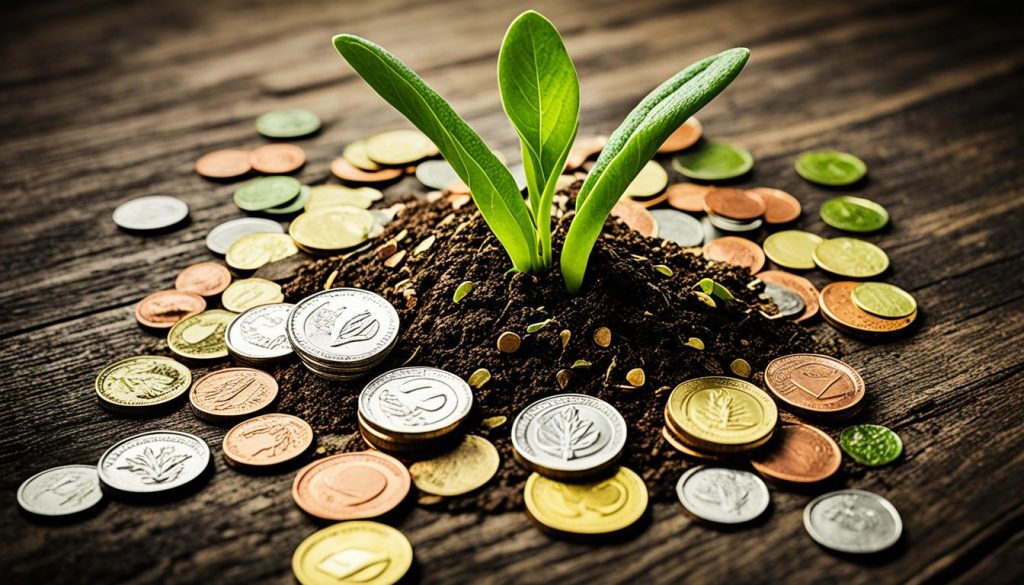In today’s fast-paced and consumer-driven society, it’s become increasingly important to prioritize saving money. Whether you’re saving for a dream vacation, a down payment on a house, or simply want to build a safety net for unexpected emergencies, having money saved up can provide peace of mind and financial security. But with so many expenses vying for our attention, it can be challenging to know where to start.
That’s why we’ve compiled a list of the top 10 best ways to save money. These smart saving tips will help you make the most of your hard-earned cash and achieve your financial goals. From cutting down on unnecessary expenses to maximizing your savings, we’ve got you covered. So let’s dive in and discover the best ways to save money!
Top 10 Best Ways to Save Money
1. Create a 50/30/20 Budget
The 50/30/20 budgeting approach is a popular and effective way to manage your personal finances. This method suggests dividing your take-home pay into three distinct categories: 50% for essential needs, 30% for discretionary spending, and 20% for savings and debt repayment. By following this balanced framework, you can ensure that your basic expenses are covered, while also allocating funds for enjoyment and building up your financial security.
To implement the 50/30/20 budgeting technique, start by calculating your net monthly income after taxes and other deductions. Then, divide your expenses into the following categories:
- Needs (50%): This includes fixed, essential expenses like rent/mortgage, utilities, food, and transportation.
- Wants (30%): This covers discretionary spending, such as entertainment, dining out, and hobbies.
- Savings and Debt (20%): This portion should be dedicated to building up your savings, paying off high-interest debt, and contributing to retirement or other financial goals.
By adhering to this balanced approach, you can maintain a healthy financial equilibrium and make progress towards your long-term objectives. The 50/30/20 budget can be a game-changer in your personal finance journey, helping you gain greater control over your spending and savings habits.
| Category | Percentage | Example Expenses |
|---|---|---|
| Needs | 50% | Rent, Utilities, Groceries, Transportation |
| Wants | 30% | Entertainment, Dining Out, Hobbies |
| Savings and Debt | 20% | Retirement Contributions, Debt Payments |
By applying the 50/30/20 budgeting principles, you can achieve a healthy balance between your essential expenses, discretionary spending, and long-term financial goals. This budgeting method can be a powerful tool in your household budgeting and money management arsenal, helping you stay on track with your personal finance objectives.

2. Keep Savings in a High-yield Savings Account
In today’s ever-evolving world of personal finance, the ability to maximise the returns on your hard-earned savings has become increasingly crucial. One savvy strategy that can help your money work harder for you is to store your savings in a high-yield savings account.
High-yield savings accounts, which typically offer interest rates higher than traditional savings accounts, can be a valuable tool in your money management arsenal. By taking advantage of these elevated savings rates, you can watch your money grow faster and more efficiently over time.
Whether you’re building an emergency fund or saving for a specific goal, keeping your funds in a high-yield account can be a wise decision. These accounts provide a secure and accessible place to store your money, while ensuring it earns a competitive return that can contribute to your overall personal finance objectives.
Moreover, with money management becoming an increasingly important aspect of modern life, leveraging the benefits of a high-yield savings account can be a game-changer in your efforts to achieve financial stability and prosperity.
By taking the time to research and compare the high-yield savings account options available to you, you can make an informed decision that aligns with your unique savings goals and preferences. This simple yet impactful strategy can help you maximise the growth of your hard-earned savings, ultimately putting your money to work in the most efficient way possible.

3. Pay Off High Interest Debt
Prioritising the repayment of high-interest debt, such as credit card balances, can be a significant money-saving tactic. By focusing on eliminating these debts, you can save thousands in interest charges over time and free up funds that can be redirected towards your savings goals.
There are several strategies you can employ to tackle high-interest debt more efficiently:
- Balance transfers to 0% interest credit cards: This allows you to consolidate your high-interest debt onto a card with a promotional 0% APR, often for a specific time period. This can help you pay down the principal faster without accruing additional interest charges.
- Debt consolidation loans: These loans enable you to combine multiple debts into a single, lower-interest payment. This can simplify your repayment process and potentially save you money in the long run.
Becoming debt-free, particularly with regards to high-cost borrowing, can significantly improve your overall financial well-being and enable you to channel more of your income towards saving and investing. By prioritising the repayment of high-interest debt, you can take a significant step towards achieving your personal finance goals and improving your money management.

4. Automate Your Saving
Automating your savings can be a powerful approach to ensuring you consistently set aside funds for your financial goals. By establishing automatic transfers from your current account to a dedicated savings account, you can seamlessly incorporate saving into your financial routine. This method helps remove the temptation to spend that money, as it is immediately redirected to your savings.
Many banks and financial applications offer features that enable you to easily set up these automatic transfers, making it simpler than ever to build up your savings on a regular basis. Automating your personal finance habits can be a game-changer when it comes to money management and achieving your financial objectives.

To get started with automating your saving, consider the following steps:
- Determine the amount you want to save each month and set up a recurring transfer from your current account to your savings account.
- Explore the automated savings features offered by your bank or financial apps, which may include options to round up purchases or divide your paycheck into designated accounts.
- Review your budget and adjust the automated transfer amount as needed to ensure you’re saving consistently without compromising your other financial commitments.
- Periodically review your automated savings to confirm the transfers are occurring as expected and make any necessary adjustments.
By automating your financial habits, you can take the guesswork and temptation out of saving, allowing you to steadily build your savings and work towards your long-term financial goals.
5. Include Saving in Your Budget
Incorporating saving as a line item in your budget is a crucial step in ensuring that you prioritise building your savings. By allocating a specific amount towards your savings goals each month, you can make saving a consistent and non-negotiable part of your financial routine. This approach helps to instil the habit of saving and ensures that you’re actively directing a portion of your income towards your long-term financial objectives, whether that’s an emergency fund, a down payment on a house, or retirement savings.
Treating saving as an essential expense, rather than something you’ll do with what’s left over, can go a long way in helping you achieve your financial goals. Budgeting for personal finance and money management is a fundamental part of effective financial planning. By including saving as a budgeted item, you’re making it a priority and ensuring that it doesn’t get overlooked or pushed aside.
Creating a budget that incorporates saving can be a highly effective way to stay on track with your budgeting goals. Here are some tips to help you include saving in your budget:
- Determine your savings goals: Decide how much you need to save each month to reach your short-term and long-term financial objectives.
- Allocate a specific amount: Treat your savings contribution as a non-negotiable expense in your budget, just like rent or utilities.
- Automate your savings: Set up automatic transfers from your current account to your savings account to make the process seamless.
- Review and adjust as needed: Monitor your budget regularly and adjust your savings contribution as your financial situation changes.
By making saving a line item in your budget, you’re taking a proactive step towards achieving your financial goals and building a secure financial future. This approach can help you develop healthy money management habits and ensure that you’re consistently saving a portion of your income.

6. Delay Purchases with the 30 Day Rule
Mastering the art of money-saving strategies is crucial for maintaining financial discipline and curbing impulse purchases. One effective tactic that can help you achieve this is the ’30 Day Rule’. This simple yet powerful approach encourages you to pause and reconsider any non-essential purchases before finalising the transaction.
The premise is straightforward: whenever you feel the urge to make a purchase that is not a true necessity, resist the temptation and wait for 30 days before deciding whether to proceed. This cooling-off period allows you to thoroughly evaluate the necessity of the item and whether it aligns with your long-term financial discipline and consumer spending goals.
During this time, you can assess if the purchase is a genuine ‘want’ or a ‘need’. By taking a step back, you can gain clarity on whether the funds would be better allocated towards your savings objectives or other essential expenditures. Implementing the 30 Day Rule can help you avoid impulsive decisions and make more mindful spending choices, ultimately leading to increased money-saving strategies.
- Whenever you’re tempted to make a non-essential purchase, wait 30 days before finalising the transaction.
- Use the cooling-off period to carefully evaluate the necessity of the item and whether it aligns with your financial priorities.
- Assess if the purchase is a genuine ‘want’ or a ‘need’ and whether the funds could be better utilised for your savings goals.
- Avoid impulse buys and make more mindful spending decisions by implementing the 30 Day Rule.
By adopting the 30 Day Rule, you can develop stronger financial discipline and reduce impulse purchases, leading to greater consumer spending control and money-saving strategies in the long run.

7. Consider Cash Back
Maximising your savings can involve a myriad of strategies, and one effective approach is to take advantage of cash back opportunities. By using credit cards or shopping through cash back websites and apps, you can earn a percentage of your spending back in the form of cash or rewards. This essentially means you’re getting a discount on your purchases, which can add up considerably over time.
To truly capitalise on cash back programmes, it’s important to carefully research and utilise the best offerings available. Credit cards with lucrative cash back rewards on everyday expenses like groceries, fuel, and dining can be a game-changer for your personal finance strategy. Additionally, online shopping portals that offer cash back on your purchases can provide an effortless way to boost your consumer savings.
Maximise Your Cash Back Earnings
To maximise your cash back earnings, consider the following tips:
- Identify credit cards with the most attractive cash back rates on the spending categories you frequent the most.
- Utilise online shopping portals that offer cash back when you make purchases through their links.
- Take advantage of cash back apps and browser extensions that automatically apply cash back offers to your online transactions.
- Stack multiple cash back opportunities, such as using a cash back credit card in conjunction with an online shopping portal.
- Regularly review your cash back earnings and adjust your spending habits or credit card usage to optimise your returns.
By carefully leveraging cash back programmes and rewards offerings, you can effectively boost your consumer savings and enhance your overall personal finance strategy.
| Cash Back Credit Card | Cash Back Rate | Best For |
|---|---|---|
| Amex Blue Cash Preferred | 6% on groceries, 3% on gas and select department stores | Everyday spending |
| Citi Double Cash | 2% on all purchases (1% when you buy, 1% when you pay) | Simple, flat-rate cash back |
| Chase Freedom Unlimited | 1.5% on all purchases | Flexible, no-annual-fee card |

8. Limit Energy Consumption
Reducing your energy consumption is a practical way to save money on your utility bills. By implementing simple, yet effective, energy-saving measures, you can not only lower your monthly expenses but also contribute to a more sustainable future.
Let’s explore some top tips to help you limit your energy consumption and reduce your household budgeting costs:
- Turn Off Lights and Electronics: Make it a habit to switch off lights and electronic devices when they are not in use. This simple step can lead to significant savings on your energy bills.
- Adjust Your Thermostat: Carefully adjusting your thermostat can have a noticeable impact on your energy consumption. In the colder months, try lowering the temperature by a few degrees when you are away or sleeping, and in the warmer months, raise the temperature when possible.
- Upgrade to Energy-Efficient Appliances: Over time, consider replacing older, less efficient appliances with energy-efficient models. This may require an initial investment, but the long-term savings on your utility costs can make it a worthwhile decision.
- Improve Home Insulation: Ensuring your home is properly insulated can help retain heat in the winter and keep it cool in the summer, reducing the energy required for heating and cooling.
- Install Solar Panels: Exploring the installation of solar panels can provide a sustainable and cost-effective solution for your energy needs, potentially leading to significant long-term savings on your utility bills.
By implementing these energy-saving tips, you can not only reduce your utility costs but also contribute to a more sustainable household and a greener future.
| Energy-Saving Measure | Estimated Monthly Savings |
|---|---|
| Turning off lights and electronics when not in use | £15 – £30 |
| Adjusting thermostat by 2-3 degrees | £10 – £20 |
| Upgrading to energy-efficient appliances | £20 – £50 |
| Improving home insulation | £25 – £60 |
| Installing solar panels | £50 – £150 |
Remember, the savings on your utility costs can make a significant difference in your household budgeting and contribute to your overall financial well-being. By prioritising energy efficiency, you can take control of your spending and enjoy the benefits of a more sustainable lifestyle.

9. Sell Unwanted Items
Clearing out your home of unwanted items and selling them can be an effective way to generate extra cash that can be directed towards your savings. Whether it’s clothing, electronics, furniture, or other household goods, there are numerous platforms, such as online marketplaces and local consignment shops, that make it easy to sell these items. Not only does this decluttering process free up space in your home, but the funds you generate can be a valuable addition to your personal finance and help you build your savings.
Regularly reviewing and selling items you no longer need or use can be a simple yet rewarding money-saving strategy. By decluttering your living space and selling off unwanted items, you can not only create extra income but also enjoy the benefits of a more organised and clutter-free environment.
Top Platforms for Selling Unwanted Items
When it comes to selling your unwanted items, there are several platforms to consider. Here are some of the top options:
- Online marketplaces like eBay, Gumtree, and Facebook Marketplace, which allow you to list and sell a wide range of items to a large customer base
- Local consignment shops and thrift stores, which may be willing to buy or accept your items on a commission basis
- Specialty apps and websites like Depop, Vinted, and Poshmark, which cater to the sale of clothing, accessories, and other fashion-related items
When using these platforms, be sure to research the fees, policies, and best practices to maximise your earnings from selling unwanted items.
Tips for Successful Selling:
- Declutter and organise – Take the time to go through your possessions and identify items that you no longer need or use. This will not only free up space in your home but also make it easier to list and sell these items.
- Price competitively – Research the market value of similar items and price your items accordingly. This will increase the chances of a quick sale and ensure you get a fair price for your goods.
- Take high-quality photos – Capture clear, well-lit images of your items from multiple angles to showcase their condition and appeal to potential buyers.
- Write detailed descriptions – Provide thorough descriptions of your items, including any relevant details, condition, and any flaws or defects.
- Offer excellent customer service – Respond to buyer inquiries promptly, package items securely, and provide timely shipping to build a positive reputation and encourage repeat business.
By following these tips and utilising the various selling platforms available, you can transform your unwanted items into a source of extra income and contribute to your overall savings and personal finance goals.

10. Cancel Unnecessary Subscriptions
Subscription management is a crucial aspect of personal finance. From streaming services and gym memberships to monthly box subscriptions, these recurring expenses can quickly add up and drain your budget. By carefully examining your subscriptions and determining which ones you truly use and value, you can eliminate wasteful spending and redirect those funds towards your financial goals.
Regularly auditing your subscriptions and memberships can help you maintain control over your monthly expenses and maximise your savings. In this section, we’ll explore the top tips for managing your subscriptions and cutting unnecessary recurring costs.
- Review your subscription list: Take a close look at your bank and credit card statements to identify all the recurring subscriptions and memberships you’re currently paying for.
- Evaluate your usage: Assess how frequently you use each subscription service. If you’re not getting full value from a subscription, it’s time to consider cancelling it.
- Prioritise your needs: Rank your subscriptions based on their importance and how often you use them. This will help you identify the ones you can easily live without.
- Negotiate or downgrade: For the subscriptions you want to keep, try negotiating a better rate or downgrading to a less expensive plan.
- Set subscription reminders: Use calendar alerts or subscription management tools to remind you when it’s time to review and potentially cancel your subscriptions.
- Automate the cancellation process: Many subscription services make it easy to cancel online. Take advantage of this convenience to quickly eliminate unnecessary costs.
By implementing these strategies, you can effectively manage your subscription management, reduce your recurring expenses, and improve your overall personal finance and cost-cutting efforts.
| Subscription | Monthly Cost | Usage Frequency | Cancellation Status |
|---|---|---|---|
| Netflix | £9.99 | Daily | Retained |
| Spotify Premium | £9.99 | Weekly | Retained |
| Gym Membership | £45.00 | Monthly | Cancelled |
| Monthly Snack Box | £24.99 | Quarterly | Cancelled |
Conclusion
In summary, the top 10 best ways to save money outlined in this article provide a comprehensive roadmap for optimising your personal finance and achieving long-term financial stability. From crafting a well-balanced 50/30/20 budget to automating your savings and limiting energy consumption, these proven strategies empower you to take control of your spending habits and build a solid foundation for your financial future.
By implementing these money-saving tactics, you can effectively pay off high-interest debt, grow your emergency fund, and work towards your personal financial wellbeing. Embracing a mindset of smart spending and consistent saving will not only improve your personal finance but also provide you with the flexibility to pursue your goals and make informed financial decisions.
Remember, the journey to financial freedom is a continuous process, and by incorporating these money-saving tips into your daily life, you’ll be well on your way to a more secure and prosperous future. Embrace the power of these strategies and unlock the full potential of your smart savings today.
FAQs
How to save 10k in 6 months?
To save $10,000 in 6 months, you can set a specific savings goal, create a budget to track your income and expenses, reduce discretionary spending, cut back on non-essential purchases, increase your income through side hustles or additional work, automate savings transfers, and stay motivated by tracking your progress towards your goal regularly.
What is the fastest way to save money?
The fastest way to save money involves cutting back on unnecessary expenses, setting a strict budget, increasing your income through additional sources, automating savings transfers, avoiding impulse purchases, and finding creative ways to reduce costs in your daily life.
What are some practical tips for saving money on a tight budget?
Practical tips for saving money on a tight budget include creating a detailed budget, tracking your expenses, meal planning to reduce food costs, using public transportation or carpooling to save on transportation, negotiating bills and subscriptions, and considering second-hand options for purchases.
How can I effectively track my expenses to improve my saving habits?
You can effectively track your expenses by using budgeting apps or spreadsheets, categorizing your expenses, reviewing your bank statements regularly, setting spending limits for different categories, keeping receipts, and being mindful of your purchasing behavior.
Are there any specific strategies for saving money on daily expenses and grocery shopping?
Specific strategies for saving money on daily expenses and grocery shopping include making a shopping list and sticking to it, buying in bulk for items you frequently use, using coupons or discounts, meal planning to avoid food waste, comparing prices at different stores, and opting for generic brands.
How can I negotiate better deals or discounts to save money on purchases?
To negotiate better deals or discounts, you can research prices online, ask for price matching, buy in bulk for potential discounts, negotiate with service providers for lower rates, leverage loyalty programs or memberships for savings, and be prepared to walk away from a deal if it doesn’t meet your expectations.
What are some long-term saving goals I should consider for financial stability?
Long-term saving goals for financial stability may include building an emergency fund, saving for a down payment on a house, contributing to retirement accounts, investing in stocks or real estate, funding education or healthcare expenses, and planning for major life events like weddings or vacations.
How can I prioritize saving for emergencies while also planning for future investments or retirement?
You can prioritize saving for emergencies by setting aside a portion of your income regularly, establishing an emergency fund with 3-6 months’ worth of expenses, automating contributions to retirement accounts, diversifying investments, seeking professional advice, and balancing immediate needs with long-term financial goals.





